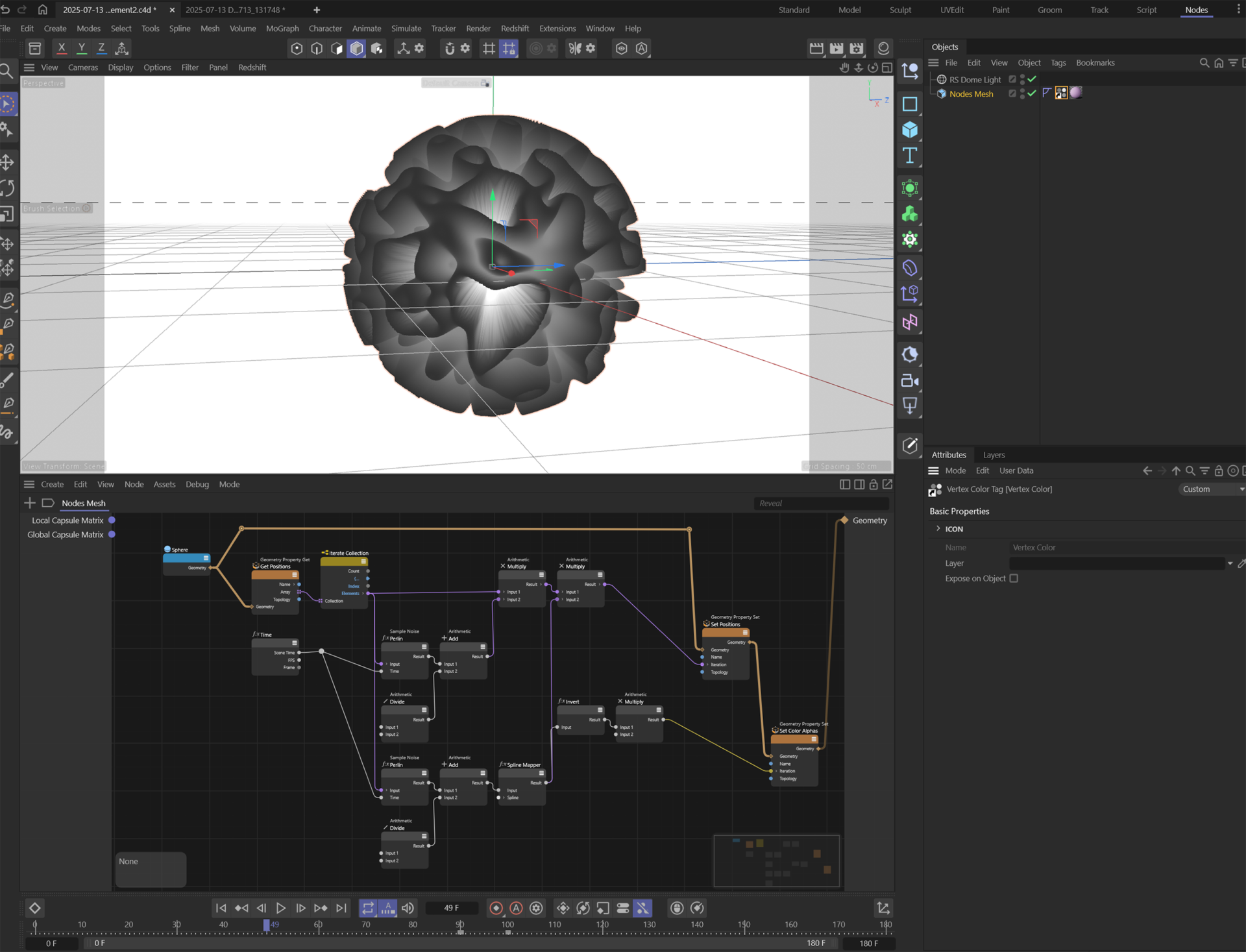Daily Cinema4D – Scene Nodes
I want to start diving deeper into Cinema4D’s Scene Nodes. They seem to work similarly to Houdini or Blender’s Geometry nodes (very loosely), and I think it’ll open a lot of doors for me, animation-wise. However, like all things Cinema4D, the biggest learning curve is figuring out what you can do, and how Cinema4D hides the tools I’m looking for.
So, to get started, I created a dendritic cell, following a node set-up that was shared with me. This was great to get my feet wet! Basically, I just recreated a noise displacement on a sphere, but using noise instead of deformers. I have plans for diving deeper into Scene Nodes, but this was a great way to orient myself.
Video of the three different versions of the dendritic cell.
Node set up (just cell)
The geometry is created within the Nodes Mesh. The shape is driven by two displacements – one to drive the macro shape, and one to drive the folds.
In this setup, noise is applied to the point positions to drive the displacement. By default, the noise affects the points proportionally between 0,0,0 and their original position, effectively pulling them inward based on noise intensity. To avoid collapsing the mesh inward, we introduce a baseline offset.
Adding a constant value (such as 1) to the noise ensures that the minimum noise value results in no displacement, while the maximum still pushes outward.
Because we’re working at a small scale, we uses a divide node to reduce the amplitude of the noise making the deformation more subtle and controlled. This helps prevent overly sharp or chaotic displacement and gives us more control over how sharp the final mesh looks.
The fold displacement also gets piped through a spline mapper to control the shape a bit more.
Those get piped out into the actual geometry. As a bonus (and what initially caught my eye on the original creator’s screenshot), the displacement amounts can be used to drive the object’s color as well, which I piped into the material as a vertex color.
This excites me as a potential way to circumvent the bothersome “difficult vertex maps on non-baked objects”. We’ll see what we can do with it! I’m definitely going to explore this path a bit more.
After all that, I animated the noise over time, and added some debris/”virus bits” via a cloner, and rendered out a couple of different versions!

